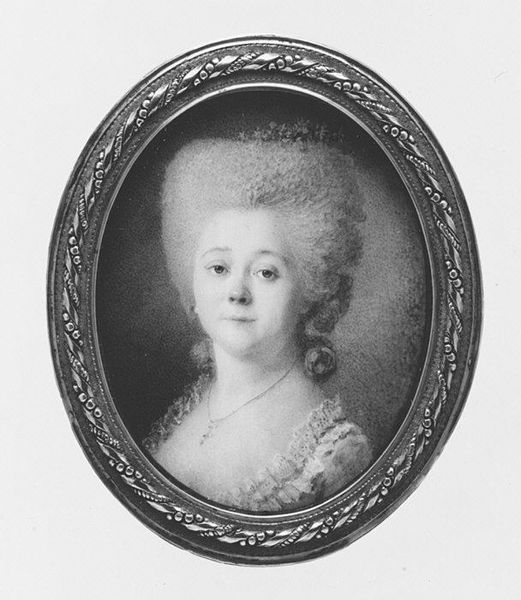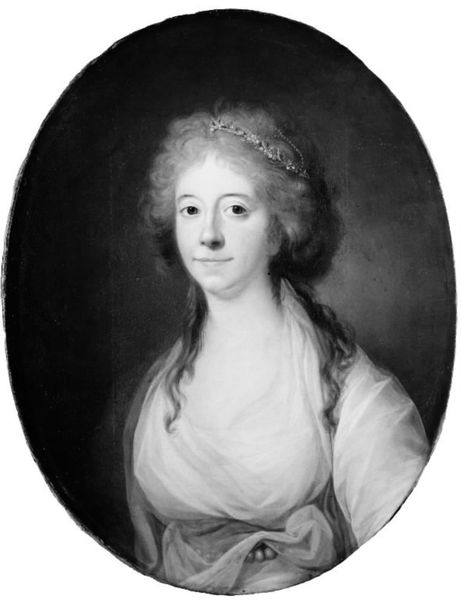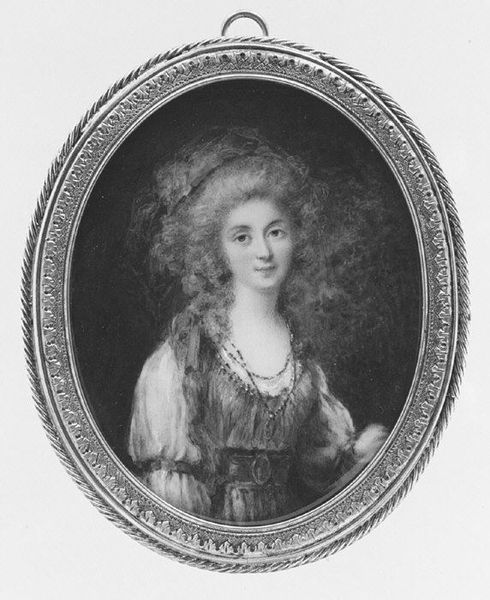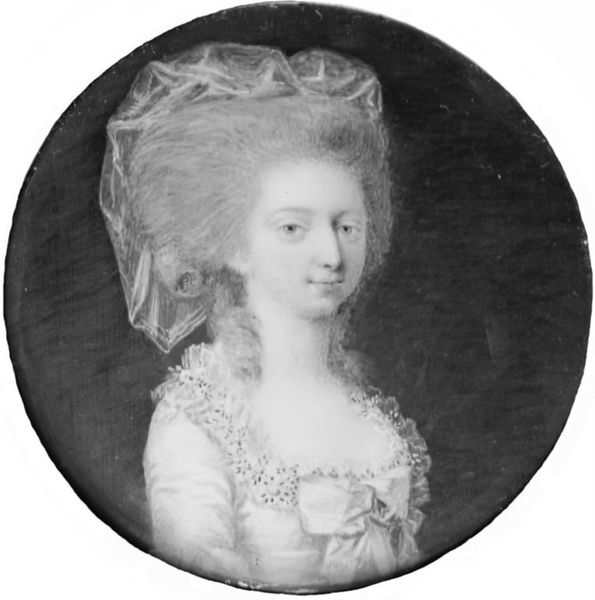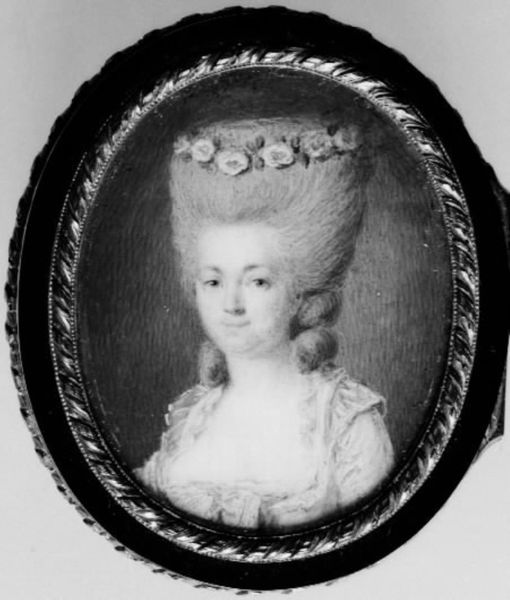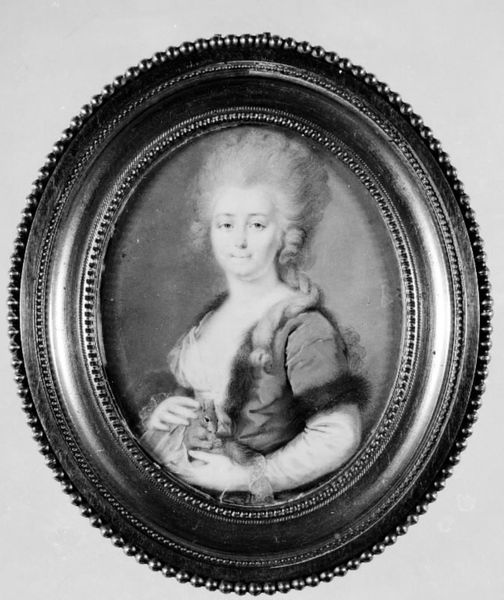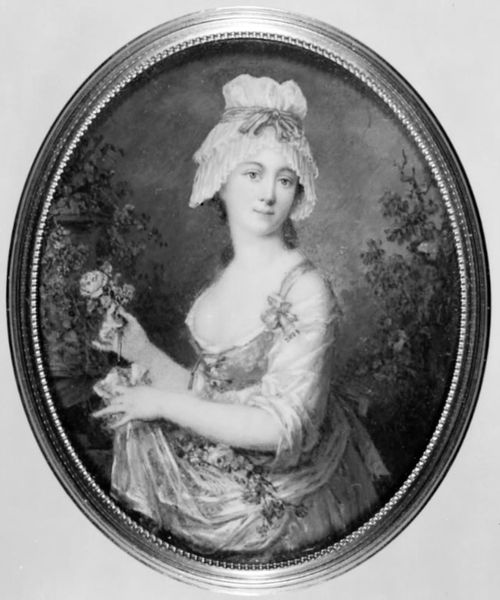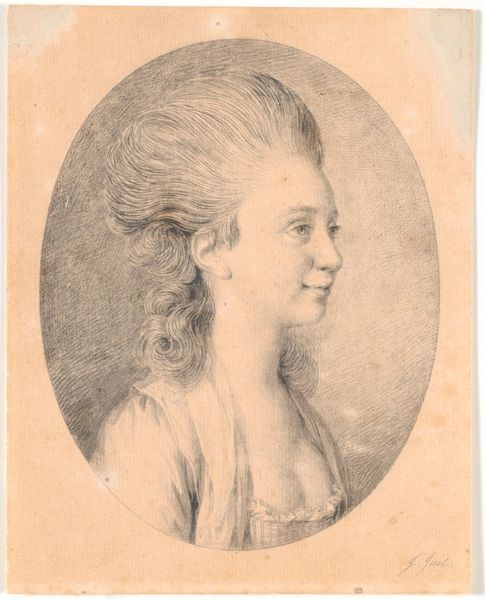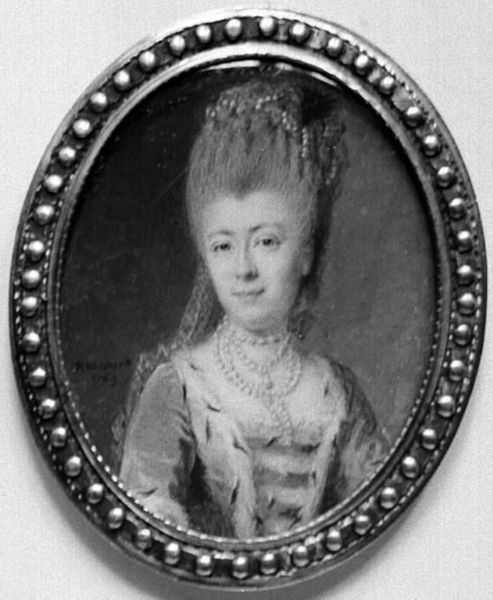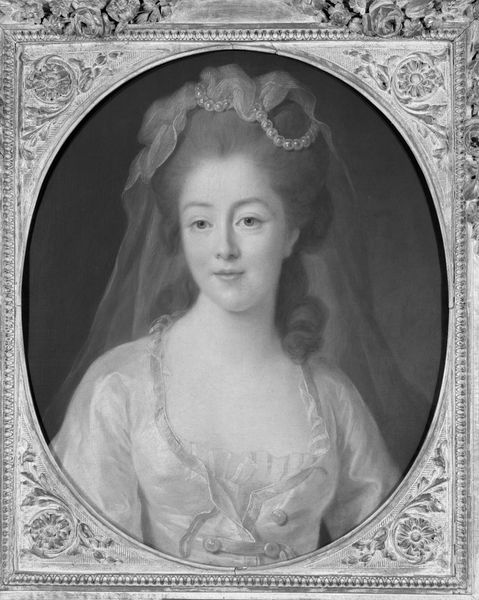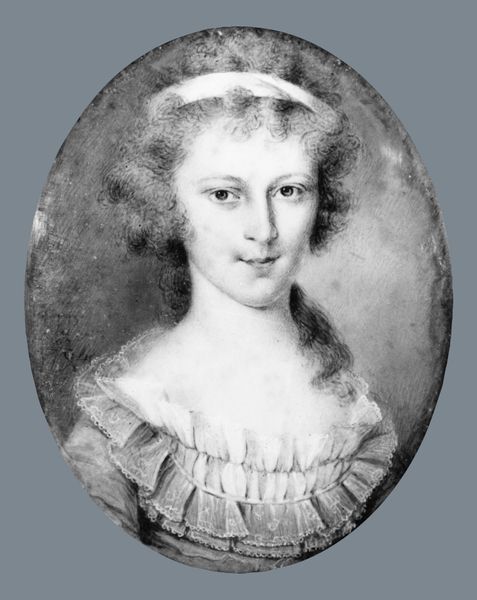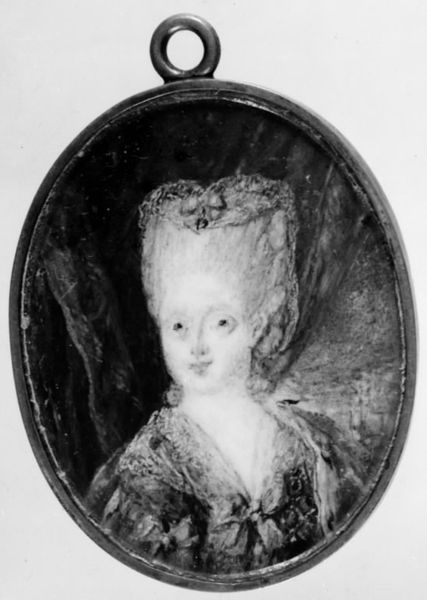
painting
#
portrait
#
neoclacissism
#
black and white photography
#
painting
#
black and white
#
monochrome photography
#
history-painting
#
academic-art
#
monochrome
#
monochrome
Dimensions: 70 cm (height) x 54.5 cm (width) (Netto)
Curator: Looking at "Grevinde Margarethe Moltke, f. Løvenskiold," painted in 1786 by Jens Juel, currently residing at the SMK—Statens Museum for Kunst, what’s your immediate impression? Editor: Well, it's stark. The monochrome palette definitely evokes a sense of classicism, yet the voluminous hair and delicate fabric give it a romantic edge. Curator: Precisely! The artist's adherence to Neoclassical ideals is evident, but it's tempered with the influence of the Rococo period, especially in the portrayal of the sitter's fashion. Examining Juel’s choices of pigment available at the time, we gain insights into the economics of portraiture in late 18th-century Denmark. How readily accessible were these materials, and what does their selection say about both Juel and his subject? Editor: True. The oval composition draws the eye inward, framing her face as the central focal point. There is a semiotic play at work. Her gaze is direct and unwavering—a deliberate engagement with the viewer. We must unpack this. Curator: Consider too, the labor involved in producing such a work. How long did the countess need to sit? What role did the artist’s studio assistants play? Who prepared the canvas? Examining the social network of labor is key to unlocking a painting like this. Editor: You're prompting me to look beyond her delicate features! But I can't help being drawn to the detail—the subtle chiaroscuro creating volume, the almost tangible texture of her gown. What philosophical statement is Juel trying to communicate using such a simple palate? Curator: A powerful one, no doubt, but we must look beyond the aesthetic to truly appreciate this piece. Investigating Juel's workshop practices and the materials available to him brings a rich context. Editor: That's true, but focusing solely on materiality feels... incomplete. By analysing the stylistic cues, the composition, and the emotive qualities evoked, we’re better positioned to grasp its historical and artistic significance. Curator: Indeed, a multi-faceted perspective enhances our understanding of both the artwork and the society it reflects. Thanks for unpacking this interesting work with me. Editor: The pleasure was all mine. Always great to explore the nuances of perspective!
Comments
No comments
Be the first to comment and join the conversation on the ultimate creative platform.
